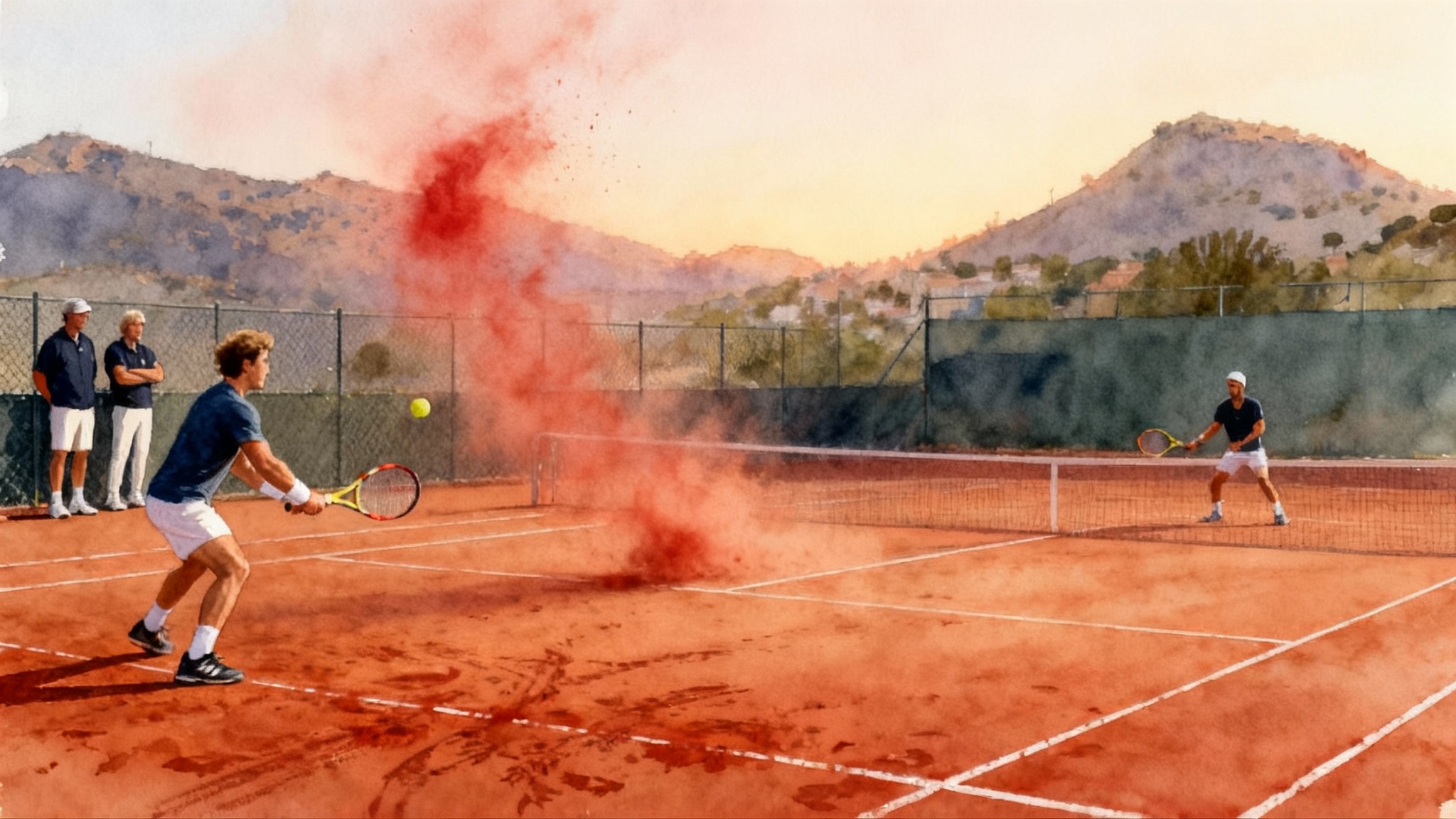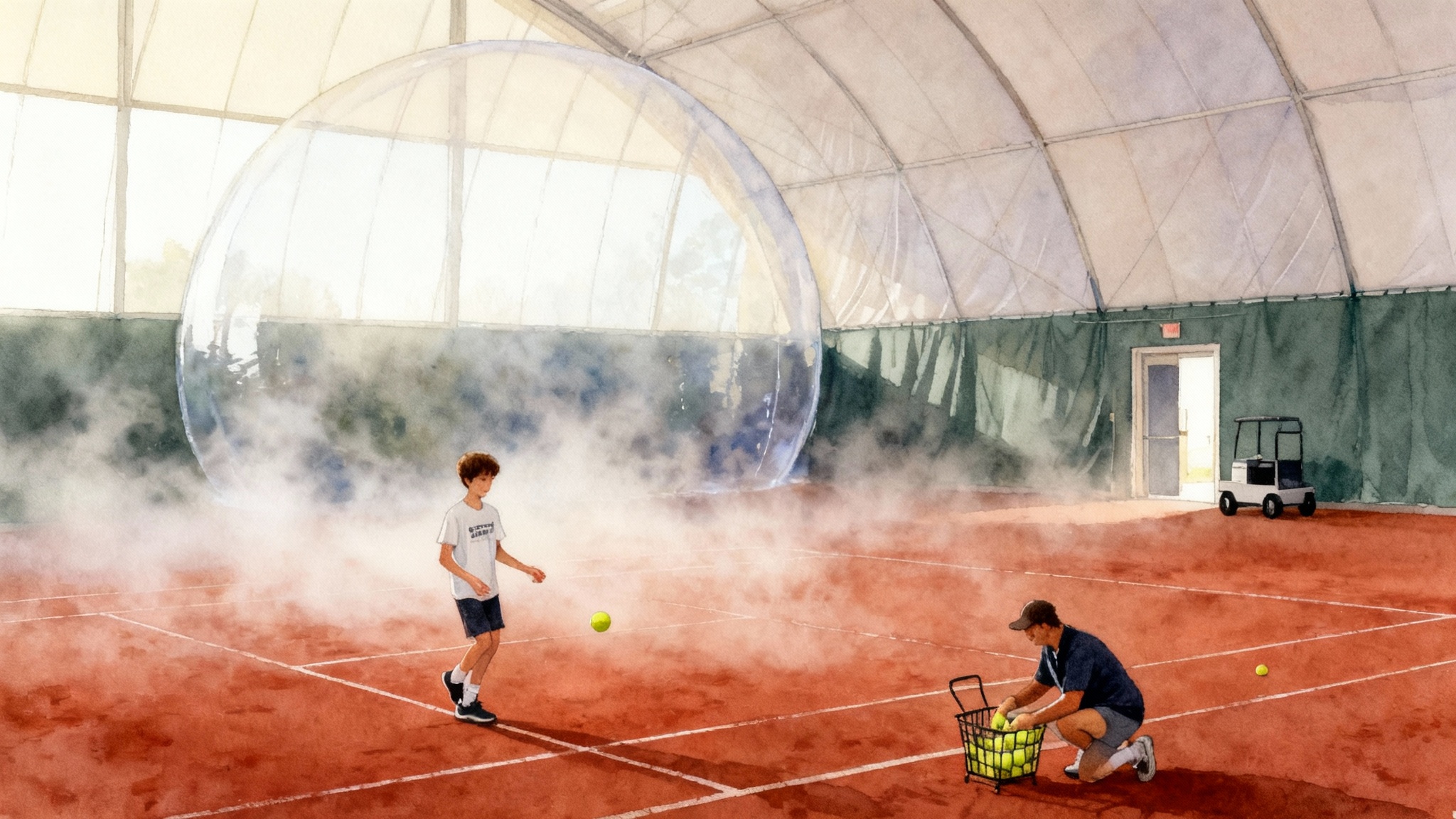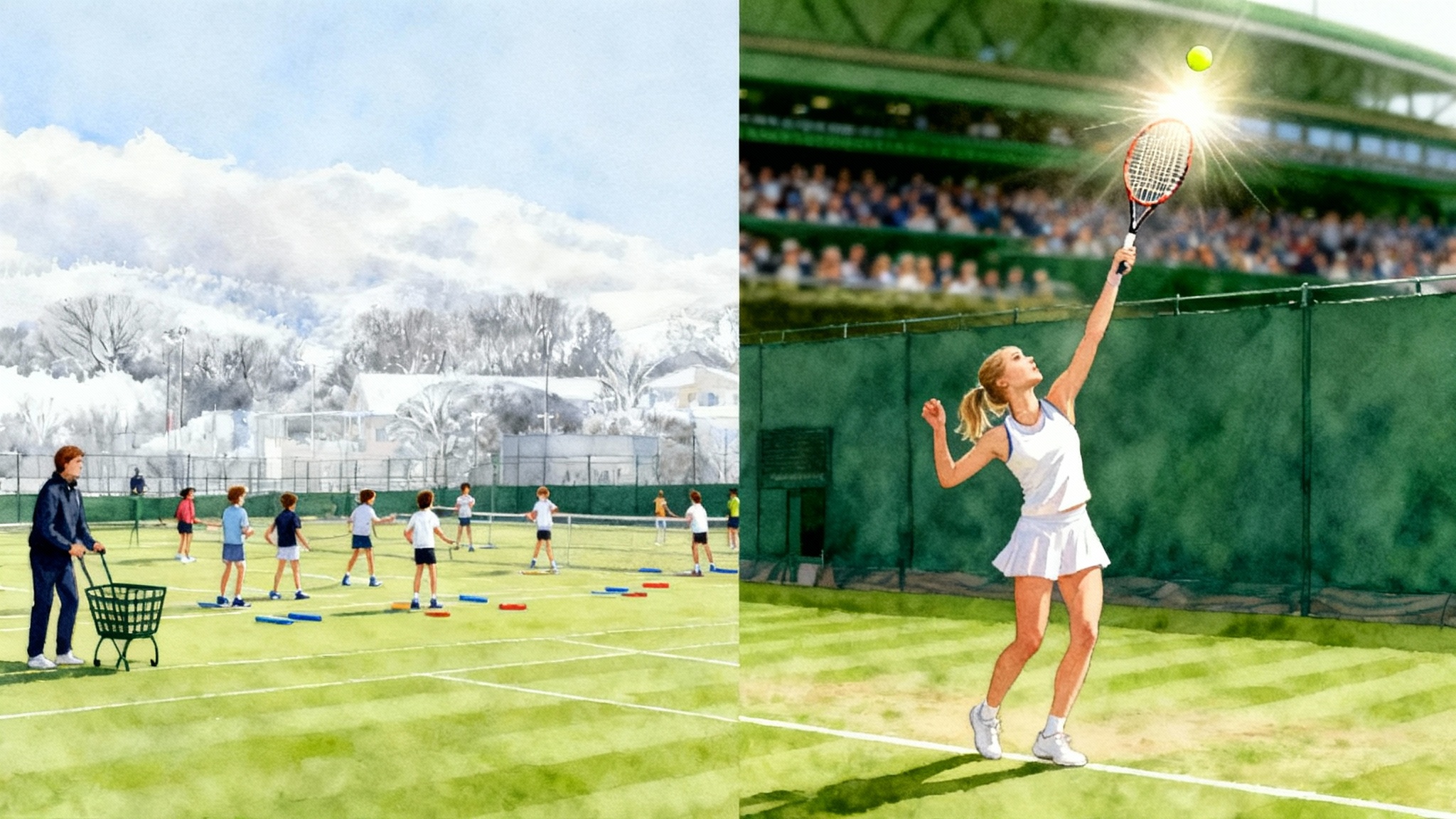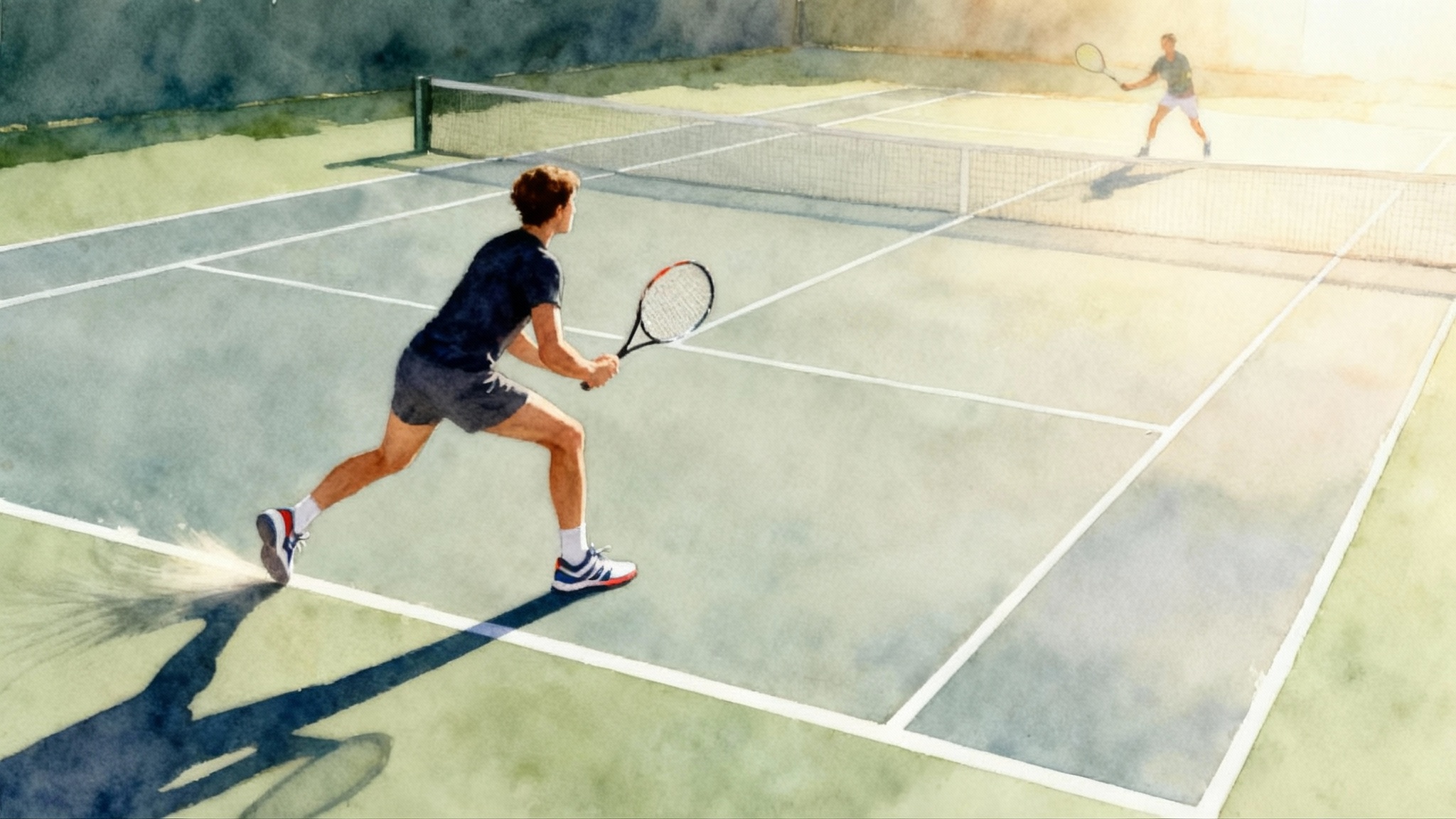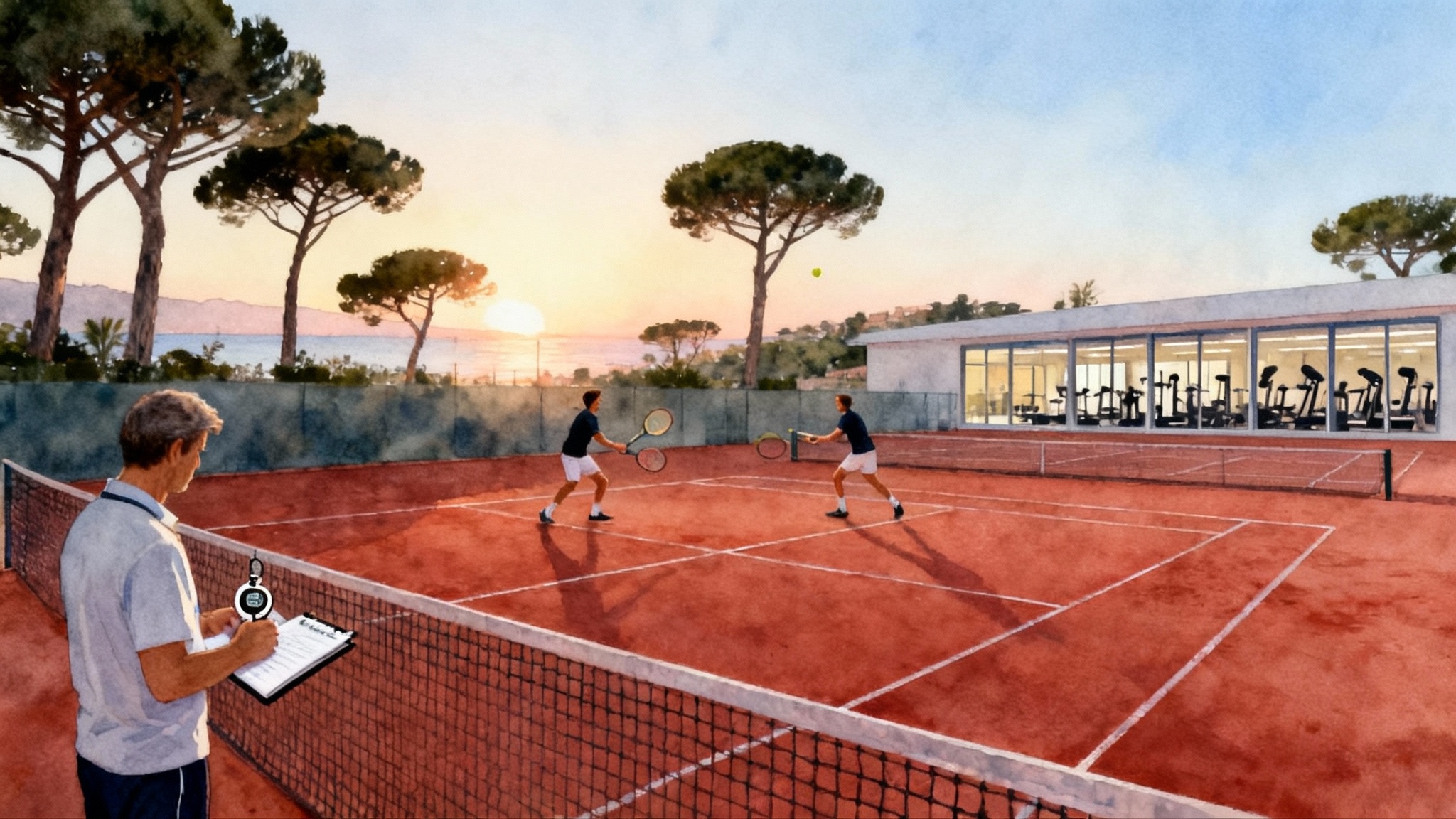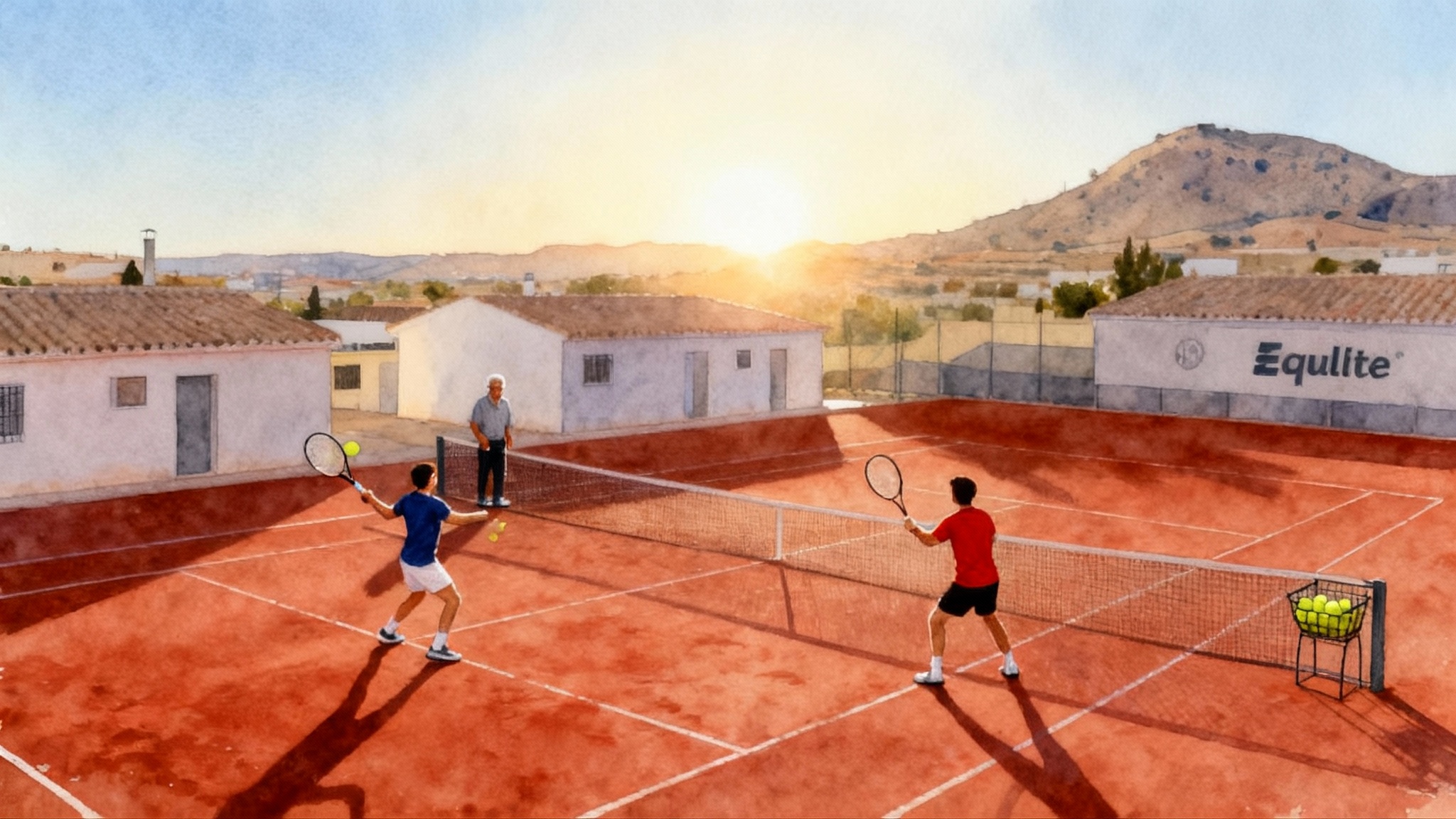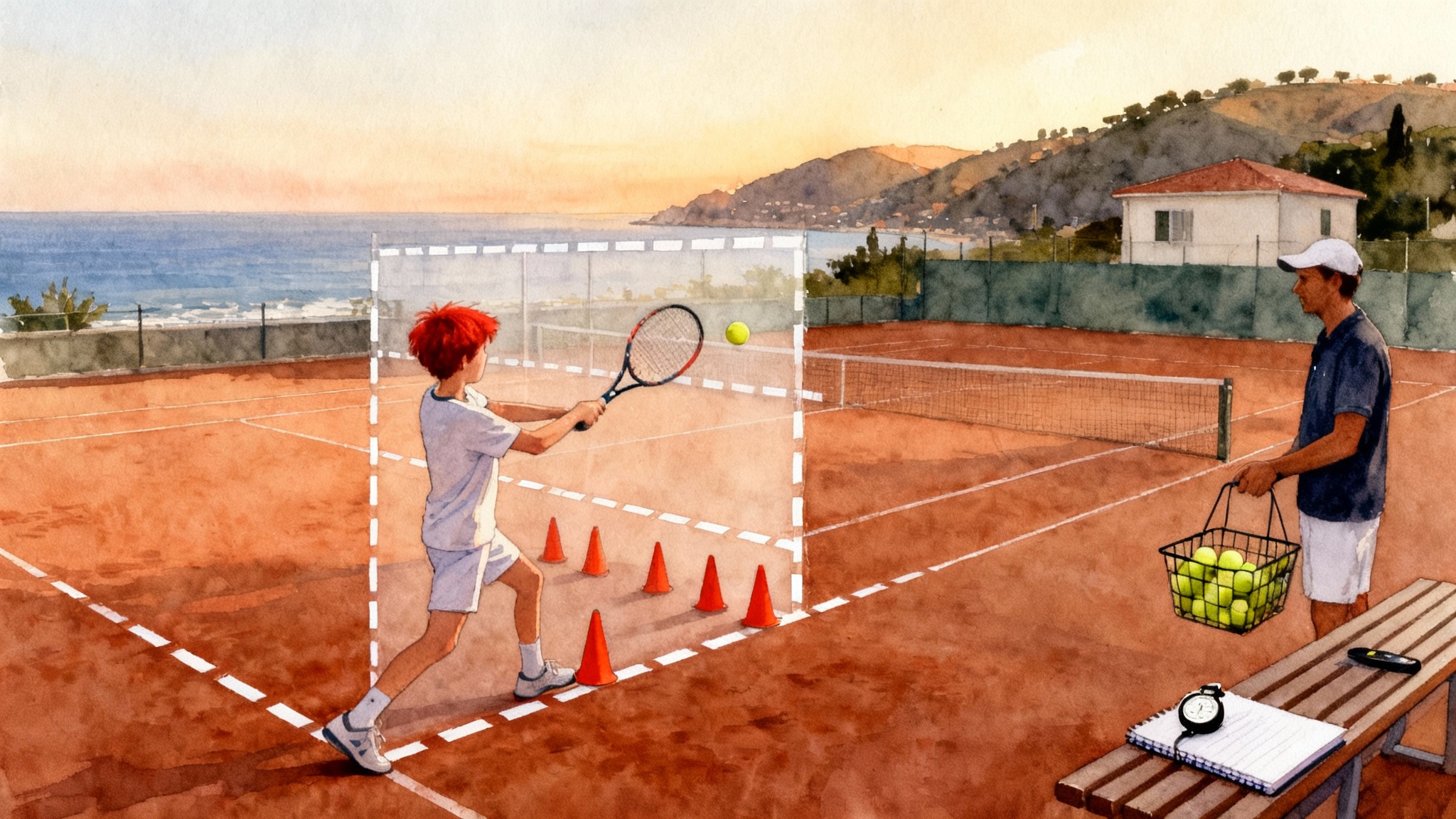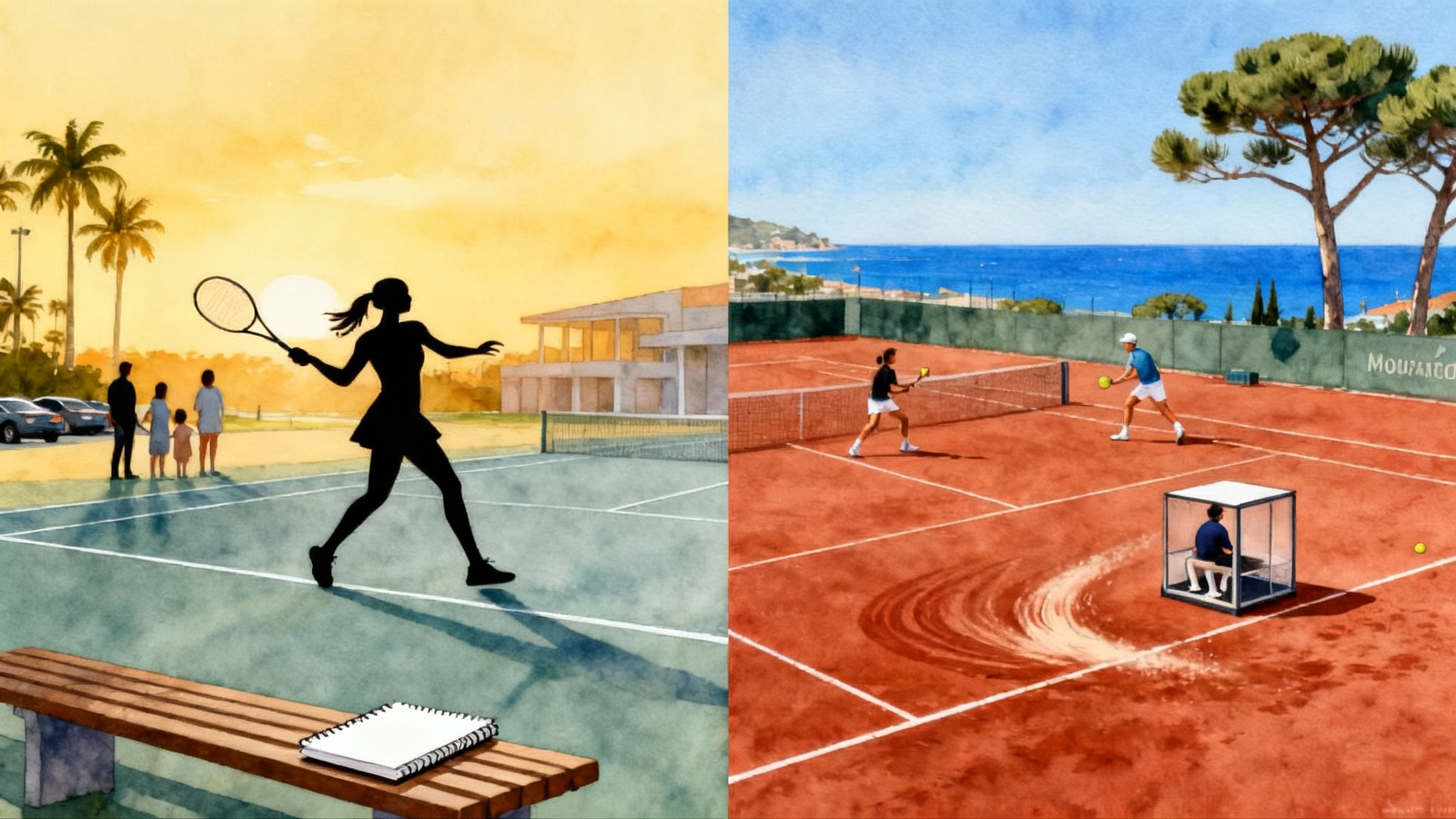Naomi Osaka’s Florida Path: ProWorld to Evert, 2024-25 Return
Naomi Osaka’s Florida academy route began with early blocks at ISP and Harold Solomon, accelerated at ProWorld in Delray Beach, then refined at Evert. Here is how those choices built her aggressive identity and powered a smart 2024-25 return.
Why her Florida academy path matters
In tennis, where a player chooses to train is not just a logistical decision. It sets the daily opponents, the coaching language, the fitness philosophy, and the rhythm of growth. Naomi Osaka’s rise is often described through major trophies and global endorsements, but the quieter story is a Florida academy path that matched each stage of her development. Early blocks at ISP and Harold Solomon gave structure. A teenage runway at ProWorld in Delray Beach built power, fitness, and a serve-first mindset. A finishing stretch at Evert Tennis Academy added polish and matchcraft. Put together, this modular route gave Osaka the rope ladder she needed to climb from raw potential to a hardened aggressive baseliner ready for the biggest courts.
This progression is well documented across profiles and public records, including her early Florida training background. That paper trail matters for families deciding between one-size-fits-all programs and a sequence of targeted training environments.
Early Florida blocks: ISP and Harold Solomon
The first phase looked like a sampler plate. Osaka’s family sought out ISP and the Harold Solomon program to establish fundamentals and a daily ball diet that was higher quality than what she could find at home. These were months where the goals were concrete and narrow: secure clean mechanics on the forehand and backhand, reinforce the contact point, emphasize repetition over complexity, and build a baseline fitness floor that would allow more volume later.
Think of this stage as pouring the concrete slab before any walls go up. The coaches prioritized dependable shapes on high heavy balls, efficient split steps, and footwork patterns that would later support big first strikes. Parents watching from behind the fence would have seen high-ball feeding, crosscourt-to-down-the-line progression drills, and short sprints between cones. The intent was not to imprint a complete game yet, but to prevent technical debt. When Osaka accelerated later, those early deposits meant she did not pay interest on flaws under stress. For more on the movement side, see our breakdown of the split-step footwork habit.
ProWorld in Delray Beach: building power, fitness, serve
Osaka’s teenage development found a home at ProWorld Tennis Academy in Delray Beach. The environment there fit her trajectory. ProWorld has a reputation for letting heavy hitters be heavy hitters, then requiring the body to keep up. Sessions were designed around three pillars.
- Power repetition: Buckets of first-strike patterns, particularly two-ball sequences that start with a serve or return and flow into an aggressive forehand to space. Osaka’s compact backswing on the forehand and her ability to drive through the court were trained on lively hard courts that rewarded pace.
- Fitness as a weapon: Not just conditioning for its own sake, but intervals that mirrored point structure. Timed baseline to service-line repeats, medicine ball rotational throws between hitting blocks, and band-resisted lateral shuffles that directly translated to open-stance hitting.
- Serve emphasis: Toss consistency, knee bend timing, and a target map that pushed her to own wide and T locations on both deuce and ad sides. Progress was measured in hold percentage during practice sets and second-serve aggression rather than only radar readings.
Delray Beach also offered what serious juniors need but do not always get: a daily practice ecosystem of hungry players, wind that forces balance and ball control, and coaches who let matches teach lessons. Osaka’s competitive sets in that setting helped her learn to reset after misses without shrinking her targets. That stubborn commitment to depth and pace became part of her identity.
Evert Tennis Academy: polish and structure
The next step was about refining edges. Evert Tennis Academy tends to press for structure, scouting, and patterns that travel on tour. There the focus tilted toward point construction, transition skills, and match accountability.
- Pattern clarity: Learn how to build forehand looks with backhand neutral balls, not just blast through both wings. Use heavy crosscourt backhands to hold position, then step around on the middling reply.
- Return foundations: Shorten the backswing on first serves, treat second serves as green lights, and rehearse neutralizing deep to the middle when the opponent lands a good first ball.
- Transition polish: Timed approach drills where the first volley target was pre-called, often deep and crosscourt, to keep the opponent on a leash. The goal was not to become a serve-and-volleyer, but to make the net a credible threat.
At Evert, match play came with film sessions and scouting-style feedback. Osaka learned when to press and when to buy time with height. That added enough structure that her power game could scale against different opponents and surfaces. The lesson for families is simple: once the raw tools are humming, it pays to invest in a program that codifies how those tools are used under pressure.
How these choices built an aggressive baseliner
The throughline is a methodical sequence: establish clean technique, overload power and serve, then layer decision making. The result was not an all-court disguise artist, but an aggressive baseliner who could win points with first strikes and still pass the patience test when needed.
- Serve as a platform: Because ProWorld drilled locations and second-serve intent, Osaka learned to start on the front foot. That matters in junior-to-pro transitions where free points dry up.
- Forehand as the hammer: Repetition against quality pace in Delray taught her to hold the baseline and hit through the court, not just to it. That makes her hold games faster and her break chances more dangerous.
- Composure through structure: Evert’s emphasis on patterns reduced noise in big moments. When the body is nervous, having a two-pattern menu is an anchor: serve wide, forehand to space, repeat; or heavy crosscourt backhand until a shorter ball arrives.
These are the choices that travel to the majors. They do not rely on a single court speed or a perfect day.
The 2024 to 2025 comeback, built in Florida
After stepping away for maternity and life off tour, Osaka’s 2024 return was a case study in restarting the engine without reinventing it. The blueprint looked familiar: hit Florida hard courts, rebuild the fitness base with intervals that map to points, and simplify patterns in the early months. Public interviews and coverage of her return captured the themes clearly, including postpartum return insights. The focus was on training blocks first, results second.
What changed compared to her early years was the planning. Instead of endless volume, sprint and recover cycles were tracked. Serve sessions had explicit quotas for targets. Return practices included contact-point ladders where she alternated between taking the ball early and buying time with height. When match play ramped up, she emphasized match fitness by stacking two practice sets with a short recovery window.
Tactically, the comeback pushed three practical upgrades.
- Livelier return position on second serves, sometimes a step inside the baseline, to force shorter replies and free up first-strike forehands.
- Finishing forward when the ball was short. She did not become a constant net rusher, but her approach and first volley became an honest threat, especially on hard courts.
- Serve pattern variety with more body serves to disrupt rhythm before going back to the outer thirds for the big points.
Her 2024 and early 2025 calendar choices leaned toward surfaces and events that reward clean ball striking and efficient movement. That let her stack matches without asking for too much variety too soon. The principle is transferable: when returning from a long layoff, favor environments that echo your strengths while you rebuild your full toolkit. For a Florida-based comparison, look at Gauff’s Florida-to-Europe pathway.
Practical takeaways for parents and players
Families often ask whether to commit to a federation pathway or build a modular academy sequence. Osaka’s route shows how modular choices can work if you plan the handoffs and budget for change.
1) Modular academy stages vs. national-federation tracks
- Fit the stage, not the logo: In the early technical stage, you want clean mechanics and reliable volume. This can be a smaller local program with a terrific fundamentals coach or a larger academy with clear technique systems. The name on the gate matters less than the daily ball quality.
- Use specialization windows: When strength and weapons are ready to be overclocked, choose an environment that loves power and knows how to build the body to support it. That is the value of a ProWorld-like block where the serve and forehand are not just tolerated but weaponized.
- Add structure before big leaps: A finishing academy should teach patterns, scouting, and transition skills. You should leave that stage able to explain how you win points, not just that you hit hard.
- Keep the ladder visible: Treat each academy as one rung. Write down what the next rung needs to be, and make sure the current program is preparing you for it.
2) Budgeting for coaching changes
Switching programs is not just a tuition decision. It involves new private-lesson rates, different fitness staffing, travel, and sometimes housing. Families who budget well front-load the costs that buy compounding gains.
- Tuition ranges: Full-time Florida academies often run from two thousand to four thousand dollars per month for group training. Private lessons can range from one hundred to two hundred dollars per hour depending on the coach. Fitness add-ons can add two hundred to six hundred dollars per month. Housing and meals vary widely.
- Transition costs: Expect a two to four week dip while the player adapts to new routines. Budget extra private hours in that window to accelerate the adjustment.
- Equipment and recovery: A heavier fitness phase means more stringing, shoes, and recovery tools. Plan for an extra set of shoes and a regular stringing cadence when volume spikes.
- Coaching continuity: When switching, retain a single point of contact for twelve weeks who tracks progress and filters feedback. If the new academy does not provide one, consider assigning a part-time external coach to own the plan.
3) Managing transitions as a player matures
- Set a three-metric dashboard: Choose one technical metric, one physical metric, and one competitive metric. For example, first serve in percentage during practice sets, shuttle-run time over ten meters, and hold percentage. Review weekly, adjust monthly.
- Build a ninety-day arc: Each academy change should have a ninety-day plan that includes an onboarding phase, a build phase, and a consolidation phase. Simple calendars beat wishful thinking.
- Protect the identity: If your player is a first-strike baseliner, do not let a transition swallow that strength. New skills should layer on top, not replace the core.
- Communicate in writing: Weekly email or shared notes keep everyone aligned. Ask coaches to log drills, themes, and observed trends. Progress hides in patterns.
4) Sample timeline for a rising fourteen-year-old
- Months 0 to 3, fundamentals block: Two to three group sessions per day focused on mechanics, one private lesson per week for fine-tuning, light strength training twice a week.
- Months 4 to 9, weapon-building phase: Add a second weekly private for serve and forehand, introduce interval-based conditioning, track hold percentage in practice sets, and schedule competitive match play twice a week.
- Months 10 to 12, structure and travel: Integrate pattern drills with filming, play a string of USTA or ITF events, review patterns after each tournament, and tune return tactics.
For a deeper example of staged development, see how a club-to-academy route shaped Rybakina’s rise in Spartak to Wimbledon.
A Florida route map for ambitious juniors
If you are mapping a Florida-based journey, think in neighborhoods rather than brand names.
- Delray Beach ecosystem: Hard courts that play honest, consistent wind that teaches ball control, and a culture of practice sets that mimic tournament rhythm. If your player needs to learn to hit through the court, this is a useful address.
- Boca Raton and surrounding hubs: A dense cluster of academies, access to hitting partners of all levels, and programs that emphasize match planning and pattern literacy. If your player needs structure and scouting, it is a strong fit. Explore the nearby Boca West racquet campus as one model for integrated training and fitness.
- Fort Lauderdale and nearby: Long-running programs with roots in fundamentals and repetition. If your player needs to iron out technical inefficiencies, this region delivers volume.
What Osaka’s path teaches about the long game
Parents sometimes fear that changing academies signals instability. Osaka’s timeline suggests the opposite. Stability came from the plan, not a single address. Early foundational blocks reduced technical debt. A power and serve phase built winning tools. A structure and pattern phase made those tools reliable under pressure. When it was time to restart in 2024, she followed the same outline and did not chase novelty for its own sake.
The practical takeaway is clear. Build a route that serves the next twelve months, then review with honesty. If the current program has already delivered its top value and the next rung requires a different daily diet, move. Budget for the transition, manage the handoff, and protect the player’s identity while you add skills. That is how an aggressive baseliner is built, how it survives layoff, and how it returns to the biggest stages with conviction.
In other words, think like a builder. Lay the slab, raise the frame, add the finish. Florida was where Osaka did that work. Wherever you are, the sequence can be the same.
